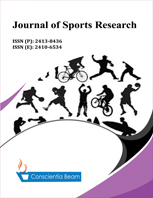Research on national fitness policy (1995-2021) from the perspective of objectives and tools
DOI:
https://doi.org/10.18488/90.v11i1.3726Abstract
This study delves into the intricate landscape of China's national fitness policy, emphasizing the pivotal role of policy tools in crafting and executing effective strategies. Through a meticulous examination of 13 policy texts, significant disparities in tool utilization emerge, revealing issues such as imbalances and varying degrees of emphasis on content system construction. Leveraging Rothwell and Zegveld's classification method, the study categorizes national fitness policy tools into supply, demand, and environment types, elucidating their unique impacts and roles. It advocates for a strategic selection and utilization of policy tools to rectify existing imbalances and bolster effectiveness. The study underscores the importance of a balanced approach between supply and demand-oriented tools, advocating for transparency, flexibility, and accountability in policy adjustments. Additionally, it highlights the significance of maintaining stable utilization of supply-oriented tools and strengthening efforts in talent development and social guidance teams to sustain momentum. Overall, the study advocates for a holistic and dynamic approach to policy tool selection and utilization, ensuring alignment with overarching goals and fostering a healthier, more active society. By offering nuanced insights and pragmatic recommendations, it aims to catalyze the realization of a stronger and healthier nation through the implementation of effective national fitness policies, thereby uplifting the well-being of its citizens and nurturing a vibrant and resilient society.

